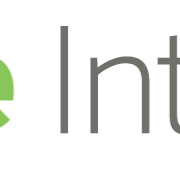Best Practice Trends for Nonprofit Organizations – Outcome Measures
Measuring and reporting outcomes is a hot topic in the nonprofit space. Donors and constituents are more engaged than ever, and they have higher expectations, increased awareness, and greater visibility. Add to that the significant number of for-profit professionals moving into the nonprofit world, bringing their best practices with them. So we find ourselves in a dynamic environment where we are expected to change, measure, adapt, and change again.
Lets get started by discussing outcome measures. These metrics are powerful, essential tools for demonstrating accountability and transparency for an organization. Outcome measures provide a real time assessment of what the organization defines as success or expected performance. This insight and visibility allows proactive management that can help ensure program, performance, and mission success.
Outcome metrics come in a variety of forms. They may be activity-based programs that involve the amount of meals served, number of immunizations given, or the level of targeted reading level improvement. Outcome metrics can also be capacity based and measure overall progress or performance across an organization. This could be mapped through fundraising, memberships, volunteers, and event participation. The metrics can also be based on a mission’s long term success or expected lifetime impact.
Why are outcome measures so important? Nonprofit organizations are experiencing more competition for funding than ever before. Donors and grantors have higher expectations. Often, gifts and grants come with stipulations for performance because the givers want to ensure that their dollars are getting the greatest possible return on investment. Government funding, as well, has strengthened compliance reporting and performance expectations. Implementing strategic outcome measures not only helps you meet compliance requirements, but also strengthens your reputation while assuring current and prospective donors that your organization is efficient, proactive, a good steward, and of course – able to do what you say you can do.
Your constituents, donors, volunteers, employees and community need to see success to support and sustain the vision and mission of your organization. Charity evaluators (such as Charity Navigator) have embraced outcome reporting and will be rating nonprofits based not only on financial reporting and analysis, but also on their tracking and reporting of outcomes. This dramatically raises the standard for all nonprofit organizations. Outcome metrics are an enormous part of improving overall visibility and performance.
The key is not to get too overwhelmed with the ‘who, what, where, and when.’ Start with the basics – based on your vision and mission. Utilize external resources to get started quickly and easily. Consistent progress is what wins the day. Balance your approach with both program outcomes and financial/operational performance. While measuring and reporting outcomes may require extra effort now, the interest and engagement that this expectation brings is a great thing in the long term for the nonprofit community – as it will bring significant benefits to organizations, donors, constituents, and communities.
A little unsure of where and how to get started? There are many resources available; some of my recommendations are:
Sage Intacct hosts and ongoing webinar giving you an overview of how the system operates, highlighting features that really show the differences between cloud and traditional accounting.









